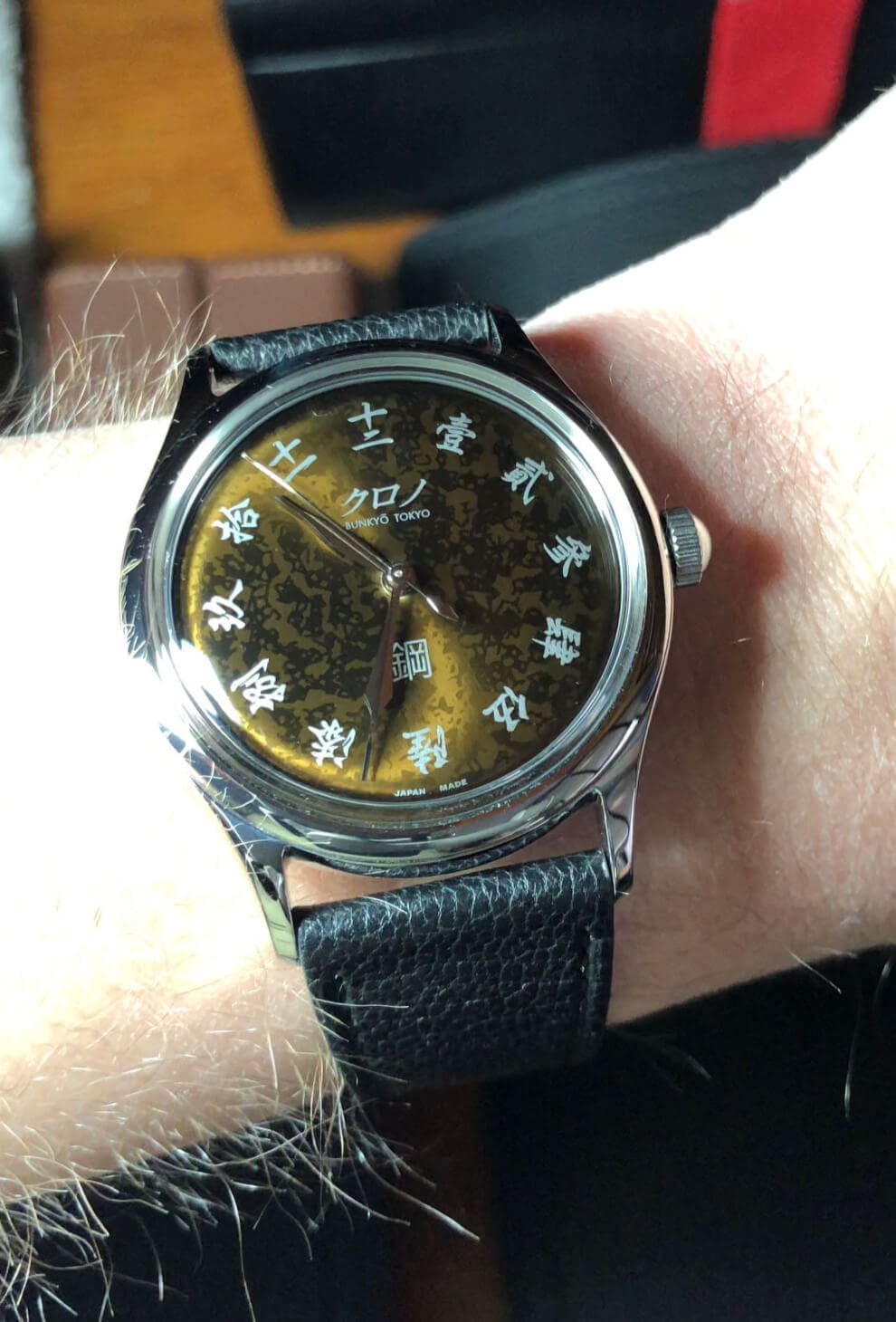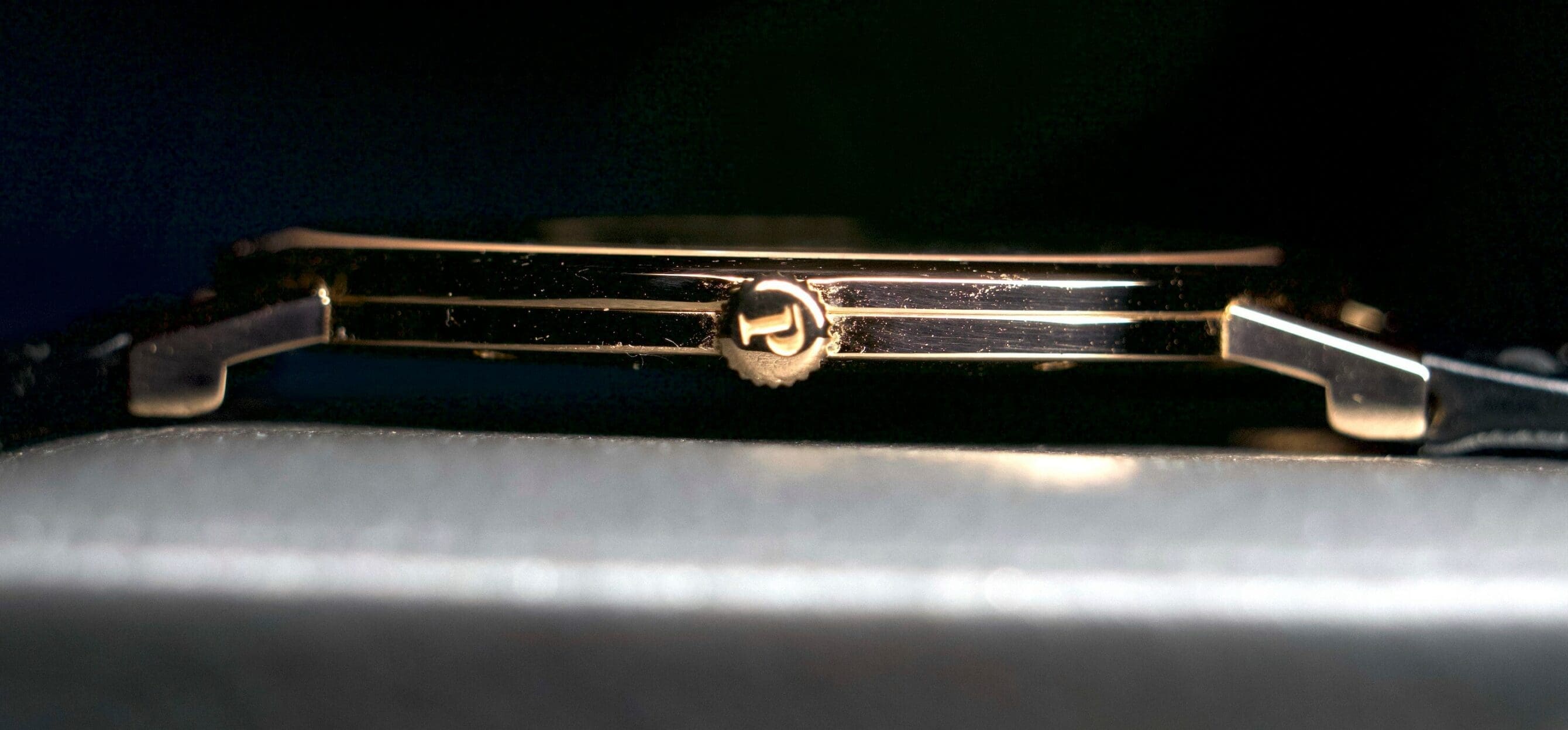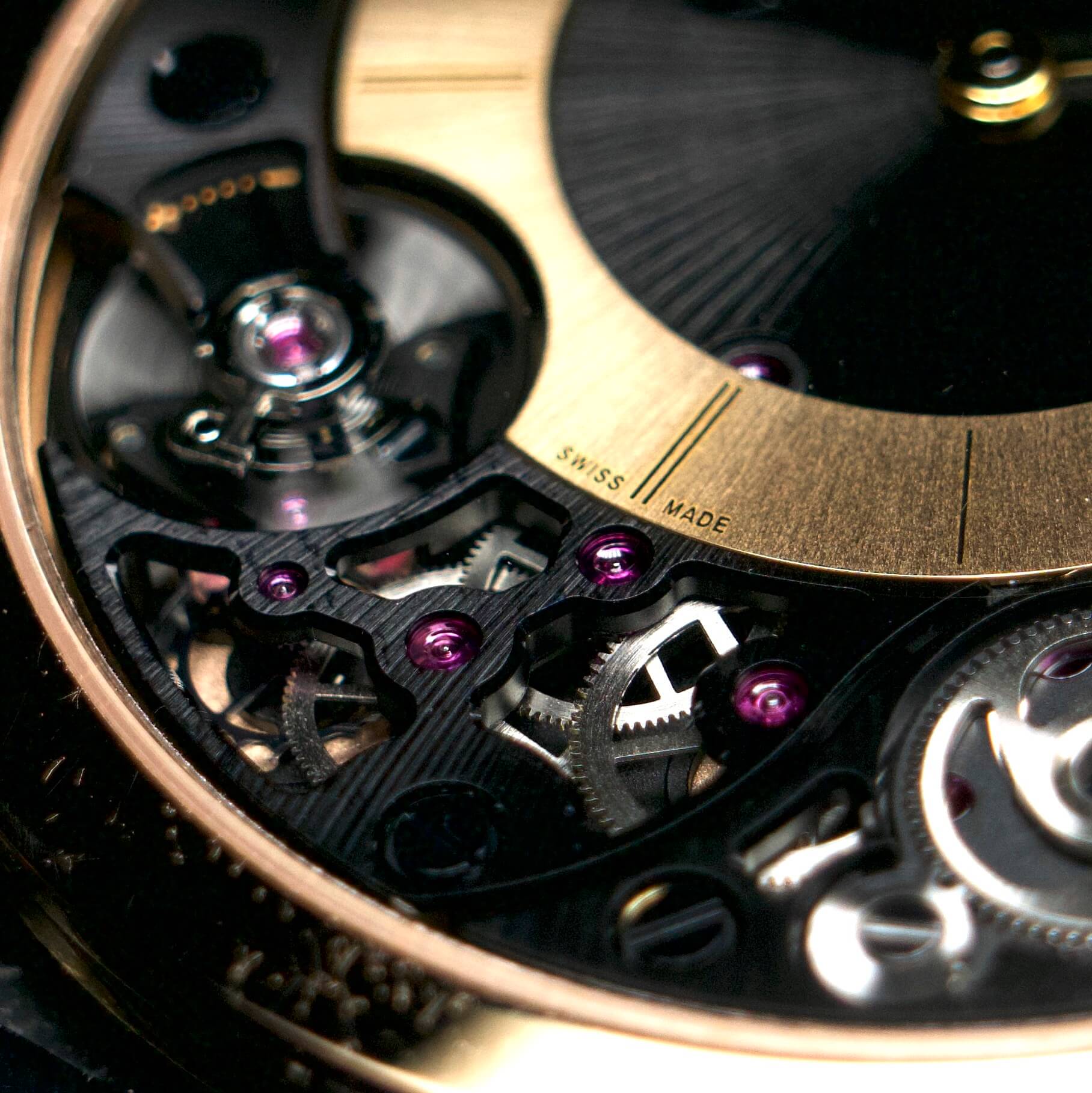TRADING FACES: Why I just gave up five Kurono watches for this one Piaget
Zach BlassIt’s Trading Faces time! For those tuning in for the first time, Trading Faces is a column in which I break down genuine watch trades I have made in my collection. I love writing this column, not only because it means there is a new and exciting, at least for me, watch in my collection, but also because it is a moment where I can get real about the nitty gritty of watch collecting. In the first-ever Trading Faces I detailed why I traded an Omega Speedmaster Automatic panda dial and a Patek Philippe Golden Ellipse ref. 3548 for a Rolex Submariner ref. 114060. In the second instalment I walked through how I leveraged my birth-year Rolex Explorer ref. 14270 and a cancelled pre-order for a Ming 27.01 to fund the purchase of my A. Lange & Söhne 1815 Up/Down ref. 221.021. In a twist-taking third instalment, I revealed why I traded the Rolex Submariner ref. 114060 I received in my first Trading Faces column for a Rolex Explorer ref. 1016 Mk1 from 1967. Now, for the fourth Trading Faces I am going through my biggest watch trade yet: my entire Kurono collection (five watches) for a Piaget Altiplano 900P.
Out: The Kurono Tokyo Watches

If you read my recent story The Collector’s Crossroads: I think I have hit a wall in my watch-collecting journey… this trade, at least what has left the collection, may not come as a massive surprise. In the story, I expressed the idea that variation creates spice, but it has to be in the right amount and in the right way. The example I gave was my collection of five Kurono watches that I have just traded.
I wrote in the story: “They are great, gorgeous watches. Initially, I felt owning multiple watches in the same comfortable 37mm size, but with very distinct and handsome dials, would be a good idea. Depending on the vibe, mood, or my wardrobe, I could sport my celadon-lacquer Seiji, rich-green sunburst Mori, salmon-adjacent sunburst Toki, sunset reddish-brown urushi lacquer Grand Akane, and rustic-gold urushi lacquer Grand Hagane. My A. Lange & Söhne 1815 Up/Down ref. 221.021 has been a go-to watch for dressier moments when I want to wear a watch with a strap, with the five Kuronos serving as playful alternatives.”

While I initially thought such variety would be a positive, over time it became clear that it was becoming a bit of negative. Ultimately there is nothing wrong with the watches, other than the fact I was no longer wearing or rotating between them like I once was.
I continued in the story: “But once I purchased my beige-lacquered Cartier Santos Dumont Limited Edition back in November, it has clearly become Lange or Cartier – leaving the Kurono watches in my watch box. This is, of course, no bueno. So I have determined these five Kurono watches are on the chopping block, something I never thought I would say when I purchased them, and I am currently investigating which watch to bring into my roster of strap-watches that can genuinely compete for wrist-time with the Lange and Cartier. I want a strong trinity of options I know I will actually rotate between, rather than a strong duo and a quintet accumulating dust.”
This was not a realisation I came to lightly. These watches had been resting safely on their pillows in my watch box for many months, with maybe two of the five actually worn once in the last six months. To have a sizeable collection, in some respect you have to have hoarding qualities – as there is no practical need for having more than a few watches, no less more than one. I have supported Kurono since the early stages of the brand, being one of the first journalists to really cover and dive into the brand. I have introduced many of their watches on the site, detailed why I bought certain of their pieces, shared tips on how to increase your odds of scoring their pieces limited in production, and even provided analysis on some of their, for lack of a better phrase, controversial moments. As a result, I took pride in owning many pieces of the brand. I still recommend people check out and tune into their creations. But, for me, it became clear that it was time to say goodbye as I recognised the watches no longer served the purpose I originally bought them for. It just did not make sense anymore, being solely a custodian of these five watches and not wearing them much. Instead it would be better to trade them for something that would get wear-time, and, in the process, the watches will eventually find new owners who will enjoy them as much as I once did.
In: The Piaget Altiplano 900P
I have long had various listings of the Piaget Altiplano 900P favourited on platforms like Chrono24 and eBay, so, naturally, when I decided the Kuronos were ready to leave the collection, I began to evaluate what I would want to try and bring in. Looking through these favourites, I realised that the listing I currently had bookmarked was from WatchBox. This was exciting news, because it meant a quick trade was potentially on the table. Selling your watches, especially niche pieces like Kurono watches, can be a bit of daunting process if done privately. Sure, you potentially stand to get more money in private sales. But, you still have to account for sellers fees, shipping costs, etc. And, you also have to be patient – there is no guarantee you will immediately get a bite for your listing. So I reached out to Joshua Thanos, a Senior Trader over at WatchBox, to get a quote for what my five Kurono watches would be worth to them. Within a day or so, I was presented with an offer and fortunately it was at a total I was comfortable with.
Now, the Piaget Altiplano 900P is not necessarily the most commonly discussed watch – especially within the context of mainstream watch buyers. Even within the scope of the niche community of fully fledged members of #watchfam, it is not a commonly spotted watch. It is after all an ultra-thin dress watch in a watch world where steel sports dominates the conversation. So before I get into the why, I want to cover off the what. The Piaget Altiplano 900P was launched in 2013 in celebration of the Maison’s 140th anniversary. Housed within a precious metal case, 38mm in diameter, the manually wound watch made headlines due to the fact it was, at the time of launch, the thinnest mechanical watch in the world.
A mere 3.65m thick, the watch achieves its ultra-thin profile due to an ingenious and daring design. In their pursuit of ultra-thin, a longstanding source of pride for Piaget, they derived a watch design in which there is no distinction between the case and movement. What I mean by this is that Piaget found a way to use the caseback of the watch as the movement’s mainplate. By doing this, they effectively shaved off the common level of a movement that would normally add precious millimetres to a watch.
This is of course much easier said than done, as creating a watch so thin runs the risk of creating something too fragile or breakable. And, even the integration of caseback and movement is just one step in realising a watch so thin. In order for the watch to be 3.65mm thick, Piaget had to create a sapphire crystal that was fractions of a millimetre thick. They also had to design the movement in a manner that, as the watch flexes due to stresses, the crystal would not come into contact with the moving gears and hands beneath. This meant having incredibly thin components, the third wheel of the gear train, for example, just 0.12mm thick, resting beneath bridges that stand ever so slightly higher – effectively shielding these sensitive moving components from contact with the crystal. The off-centre dial, which also contributes to the thinness of the movement, is also recessed beneath the bridges to ensure the hands do not make such contact as well. In turn, you have a watch in which you can see practically all the moving components of the 900P calibre despite its solid caseback. And, even while so thin, they are decorated to a high standard with radial graining on their topsides and chamfers on their edges. In this particular configuration, they blackened the calibre for aesthetic effect. I would go as far as to say that this watch is a bit slept on, and was a massive development in the world of horology and remains one of the thinnest watches in the world.
5 for 1? Why?

So, why am I personally wide awake to this reference? Well, it is not just because I am a certified watch geek. As some of you may already know, prior to joining the Time+Tide team I worked as a Watch Specialist in Piaget’s Hudson Yards boutique in NYC. As part of my onboarding, I became very intimate with the brand and their history in ultra-thin watchmaking. I learned about the legendary 9P calibre, a 2mm-thick calibre which debuted in 1957 and powered many of Piaget’s astoundingly thin creations – and even watches made by other brands as well. As its nomenclature suggests, the 900P was an evolution of this ultra-thin pursuing calibre and I often found myself wearing the watch while working in-store.
I find it such a joy to wear, as its 38mm diameter, small bezel, and large dial make it seem like a bigger watch. But, it is just under 42mm lug-to-lug, working very well on my smaller 6.5 inch or so wrist. Being so thin, and with its exposed lugs creating a camber without adding thickness to the case, the flatness of the design is mitigated well and it wraps around the wrist like a second skin. That being said, its thinness certainly results in a watch that is not as hefty as say a Rolex Submariner. The rose gold case, however, does add enough weight on the wrist to ensure you know it is there. It is definitely not meant to be a daily-wearer in the robust sense although it could survive daily wear in the boutique, or in an office setting. Its admirable 20-metre depth rating for its thickness is certainly not high enough for swimming, and I would not wear it in the rain without a raincoat sleeve covering it.
It is a watch that thrives with formal wear, its 3.65mm thickness easily able to peek out beneath even a tight shirt-cuff. While I initially preferred the models without blackened bridges, as the chamfers glisten more untreated, I would later realise that, in my biased opinion, the blackened movement paired with the rose gold dial chapter ring was the most handsome and distinct. And, while the chamfers are a bit more muted, the radially grained lines on the bridges, which follow the lines on the chapter ring of the dial, really come through. Under a loupe, you can see some signs of blemishes or scarring on the bridges of the movement. It can only really be seen under high magnification, likely evidence of the bridges shielding the components beneath, but while on the wrist, to the naked eye, you would be very hard-pressed to spot them unless you already knew they were there.
How many times have people expressed the wish they could wear their watch backwards so that they could always have the movement in view? This is yet another reason I love this watch. While it only displays the hours and minutes, with no running seconds hands, the beating escapement is front and centre at all times without obstruction. So, it very much feels alive on the wrist.
So, I think at this stage it is very clear what I love about this watch, my rich past with the brand, and why I have wanted to own one for years. But this is obviously not an inexpensive watch – even with its depreciation on the secondary market. My five Kurono watches did not outright cover the US$16,950 asking price from WatchBox, but they were able to get me close enough where I felt comfortable with the cash-difference I needed to make up. And, while your net gain from quick watch trading with a vendor, due to understandable required margins on their end, has the potential to be less than patient private sale, I was glad that my quote left me effectively close to breaking even with what I had originally spent on the five Kurono watches. As a result, I now have a watch that I long dreamed of owning and I could not be happier with this latest trade.













